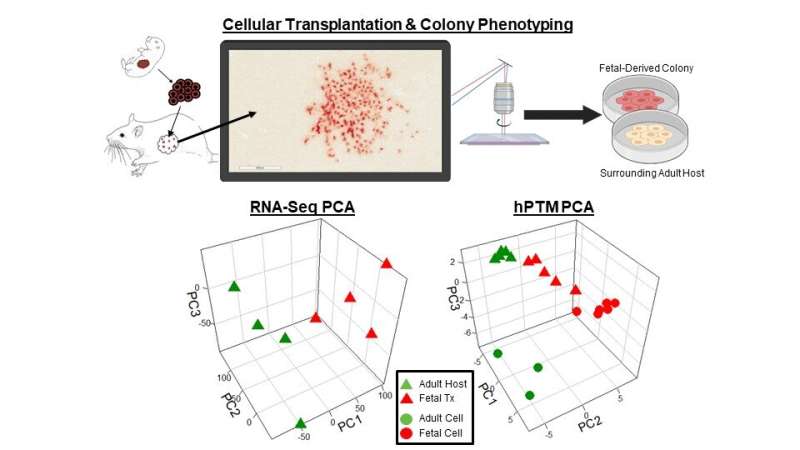Toward a feasible alternative to liver organ transplant

New insights into how fetal and adult liver cells differ could be used to help make liver cell transplants successful long term. Transplanting functioning liver cells into a patient's liver can help replace liver function that is impaired due to disease.
Today there are many more patients waiting for liver transplants than there are donor organs available. Because liver cell transplantation only requires a portion of cells isolated from a liver, it could allow multiple patients to be treated from one donated organ.
Although liver cell transplants offer a promising life-saving alternative to transplanting the whole organ, the effects aren't long-lasting when adult liver cells are used. Clinical trials and animal studies have shown that when fetal liver cells are used for liver cell transplants, they multiply and maintain function for long periods of time. However, fetal liver cells cannot be readily obtained for clinical use.
"Our work aims to characterize the mechanisms by which fetal liver cells—or hepatocytes—repopulate an injured adult liver," said Anders Ohman, a doctoral candidate in the laboratory of Jennifer Sanders, Ph.D., at Brown University. "We can then use this information to develop novel culture conditions and therapeutic strategies that can make liver cell transplantation feasible."
Ohman will present the research at the American Society for Investigative Pathology annual meeting during the virtual Experimental Biology (EB) 2021 meeting, to be held April 27-30.
To better understand why fetal hepatocytes maintain their function, the researchers transplanted fetal rat hepatocytes into the spleen of mice that had part of their liver removed. Over 10 months, the fetal cells regenerated the liver and made up an increasing percentage of the organ. The researchers then used a technique called laser capture microdissection to collect normal adult liver tissue as well as tissue derived from the transplanted fetal cells.
"Our analysis of these samples identified a number of fetal characteristics that are durably retained months after transplantation into the adult liver microenvironment," said Ohman. "We also found gene expression and cellular processes that are distinct to the fetal-cell-derived tissue."
Next, the researchers aim to identify specific biological drivers of cell growth and proliferation that are responsible for the competitive advantage that the fetal cells have in repopulating the liver.
More information: Anders Ohman will present the findings in poster R3514 (abstract).




















